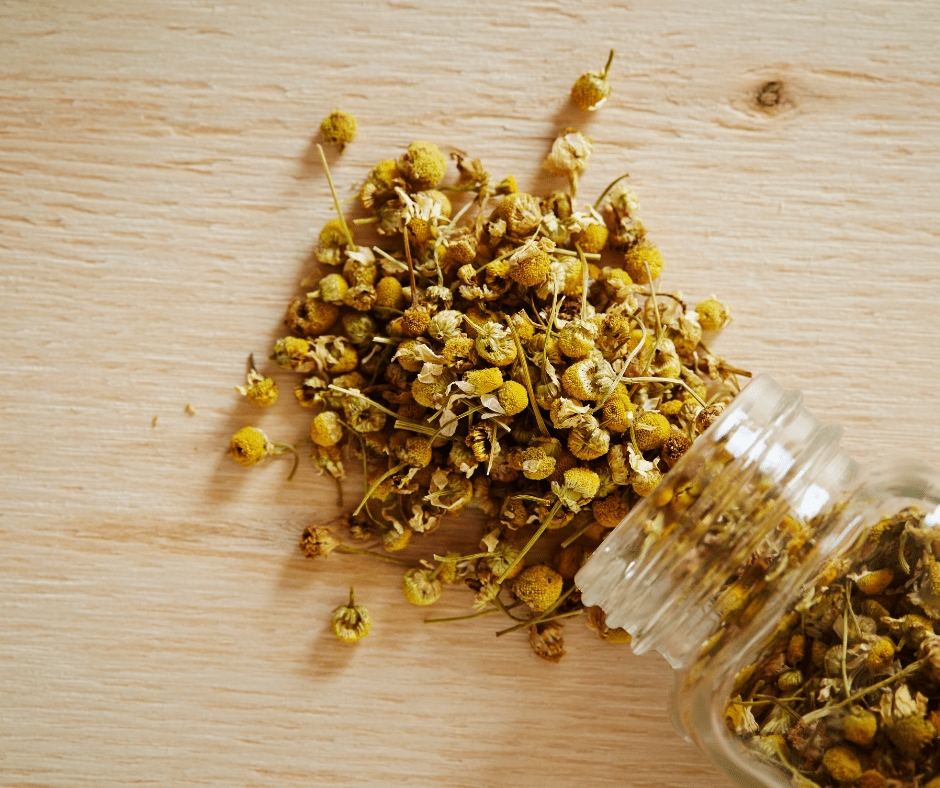Explore how this gentle, time-honored herb supports relaxation, digestion, and skin health.
What Is Chamomile?
Chamomile (Matricaria chamomilla and Chamaemelum nobile) is a flowering plant in the Asteraceae family, easily recognized by its daisy-like blossoms and apple-like scent. Herbalists have used chamomile for centuries to support the nervous and digestive systems, reduce inflammation, and ease skin discomfort.
Key Herbal Actions and Uses
Chamomile offers a broad range of therapeutic actions, making it a staple in herbalism:
Nervine & Sedative: Calms the nervous system and supports restful sleep
Carminative & Antispasmodic: Eases digestive upset, gas, and cramping
Anti-inflammatory: Soothes internal and external inflammation
Mild Analgesic: Helps relieve pain from tension or irritation
Emollient: Softens and soothes skin when applied topically
Antioxidant: Protects cells from oxidative stress
Chamomile for the Nervous System
Chamomile is widely known for its calming effects. As a natural sedative and gentle nervine, it is often used to reduce stress and anxiety, especially in the form of tea. Many herbalists recommend it as part of a nighttime routine to support sleep and relaxation.
Chamomile for Digestive Health
Chamomile tea is a traditional remedy for indigestion, bloating, gas, and acid reflux. It works by relaxing the smooth muscles of the digestive tract and reducing inflammation. A cup of chamomile tea after meals or before bed can help soothe an irritated gut.
Chamomile for Skin and Inflammation
Used topically, chamomile can help relieve minor skin irritations such as eczema, rashes, and burns. Its anti-inflammatory and antimicrobial properties make it a common ingredient in creams, salves, and poultices.
In fact, it’s one of the ingredients in our Comfrey Cream, formulated to support healthy skin and healing.
Chamomile's Antioxidant Properties
Rich in flavonoids and phenolic acids, chamomile helps neutralize free radicals in the body. These antioxidant compounds support long-term wellness by protecting cells from damage caused by oxidative stress.
Preparation and Common Forms
Tea (Infusion): 1–2 teaspoons of dried chamomile flowers steeped in hot water for 5–10 minutes.
Tincture: 1–2 mL up to three times daily.
Topical Use: Applied as creams, salves, or compresses to soothe skin.
Capsules or Extracts: Follow label or practitioner guidance.
Is Chamomile Safe?
Chamomile is generally considered safe for all ages, including children and older adults. However, there are a few important considerations:
Allergy Warning: Individuals allergic to ragweed or other Asteraceae plants may also react to chamomile. Try a small amount of tea and monitor for symptoms.
Medication Interactions: May interact with sedatives or blood thinners. Consult your healthcare provider if taking medications.
Pregnancy: While food-level amounts are likely safe, therapeutic doses should be used cautiously during pregnancy.
Conclusion: A Gentle, Versatile Herbal Ally
Chamomile’s long-standing reputation in traditional herbal medicine is well earned. Whether you’re looking to reduce stress, support digestion, or care for sensitive skin, chamomile may be a helpful addition to your wellness routine.
Free Printable!
Want to keep this information on hand? Download our Chamomile Herbal Monograph—a beautifully designed, easy-to-reference page you can print and tuck into your herbal journal. It includes key uses, preparation tips, and safety notes to support your home apothecary practice.
Click here to download your free Chamomile monograph (PDF)
Disclaimer: The information provided in this monograph is for educational purposes only. It is not intended to diagnose, treat, cure, or prevent any disease. Always consult your healthcare provider before starting new herbal therapies, especially if you are pregnant, nursing, or taking medications.

